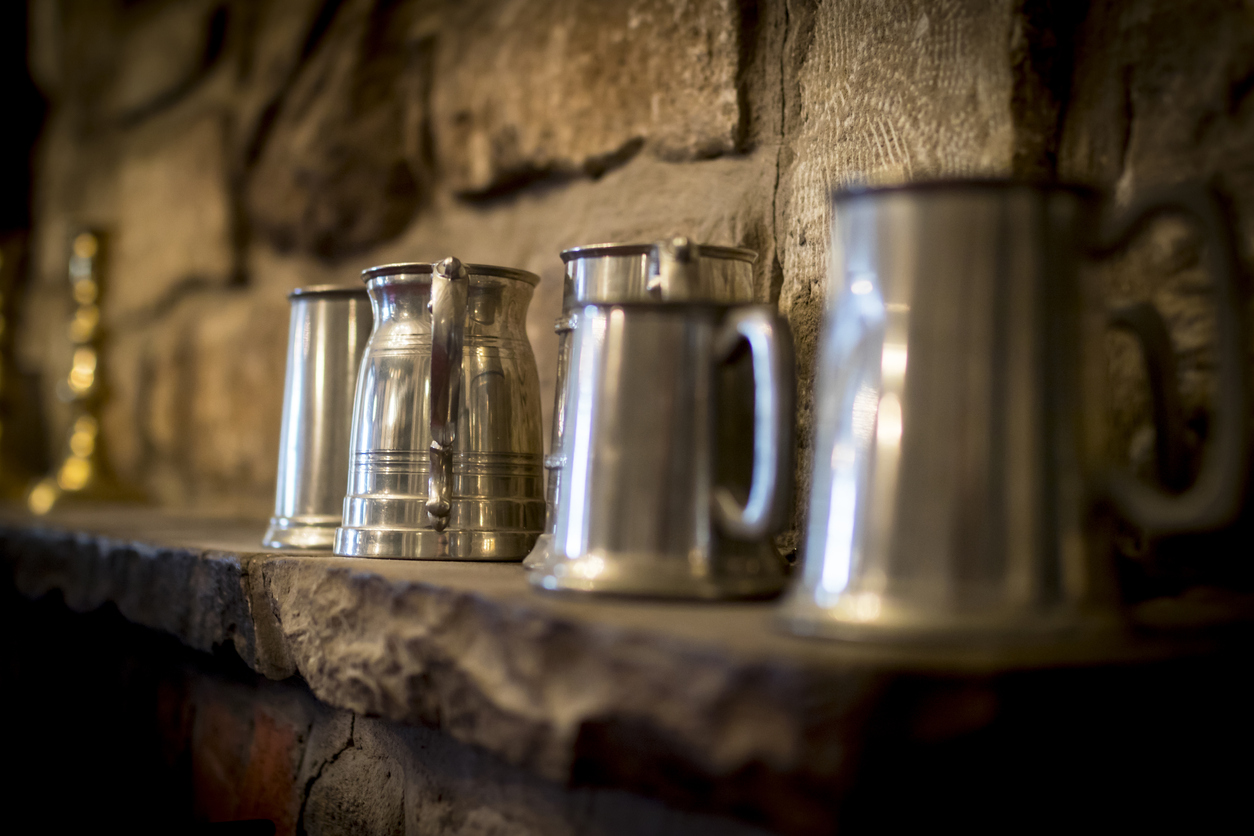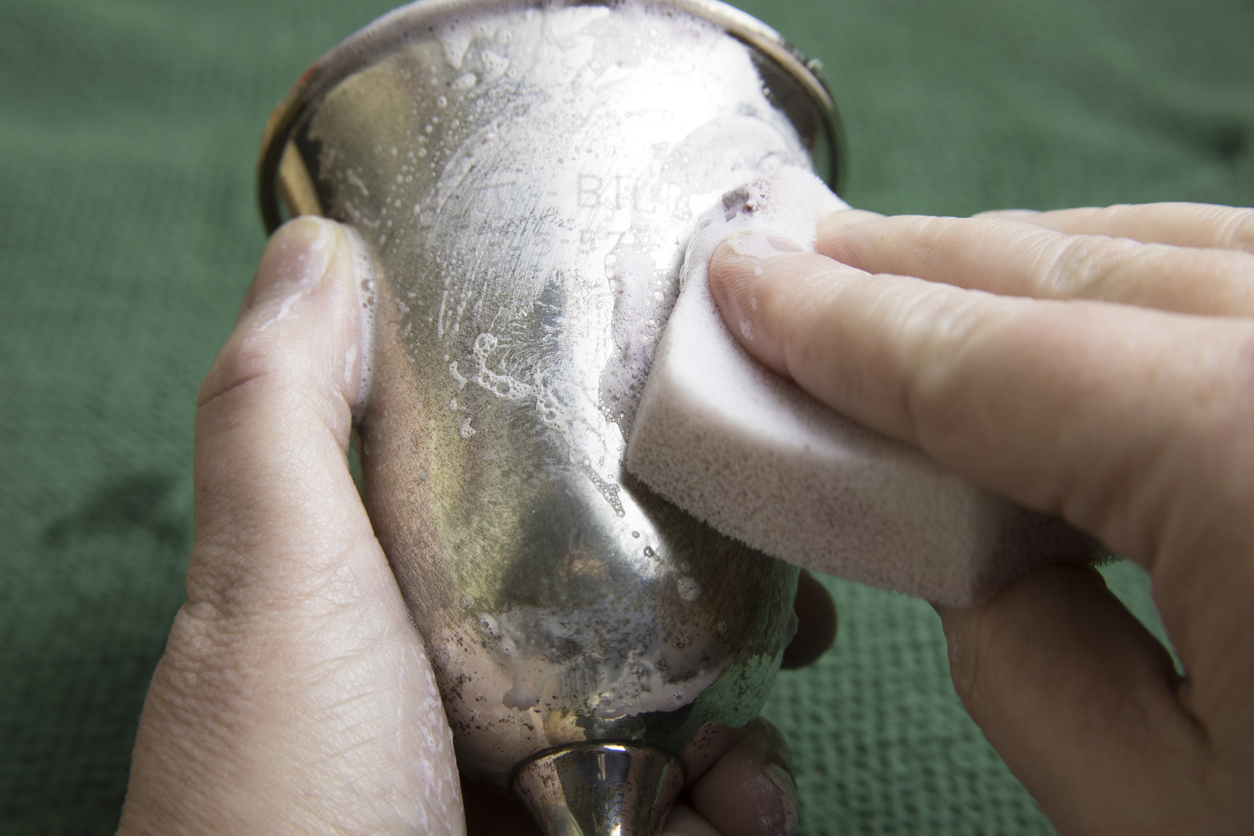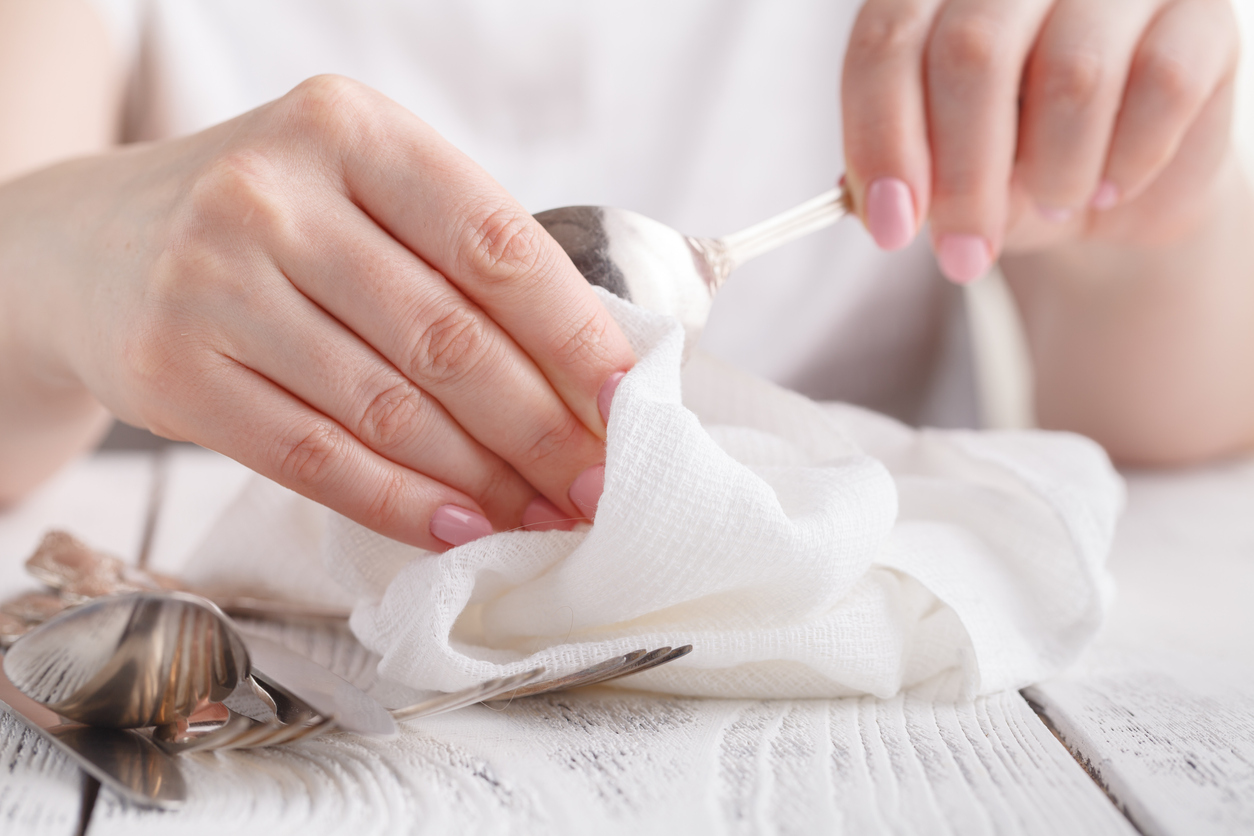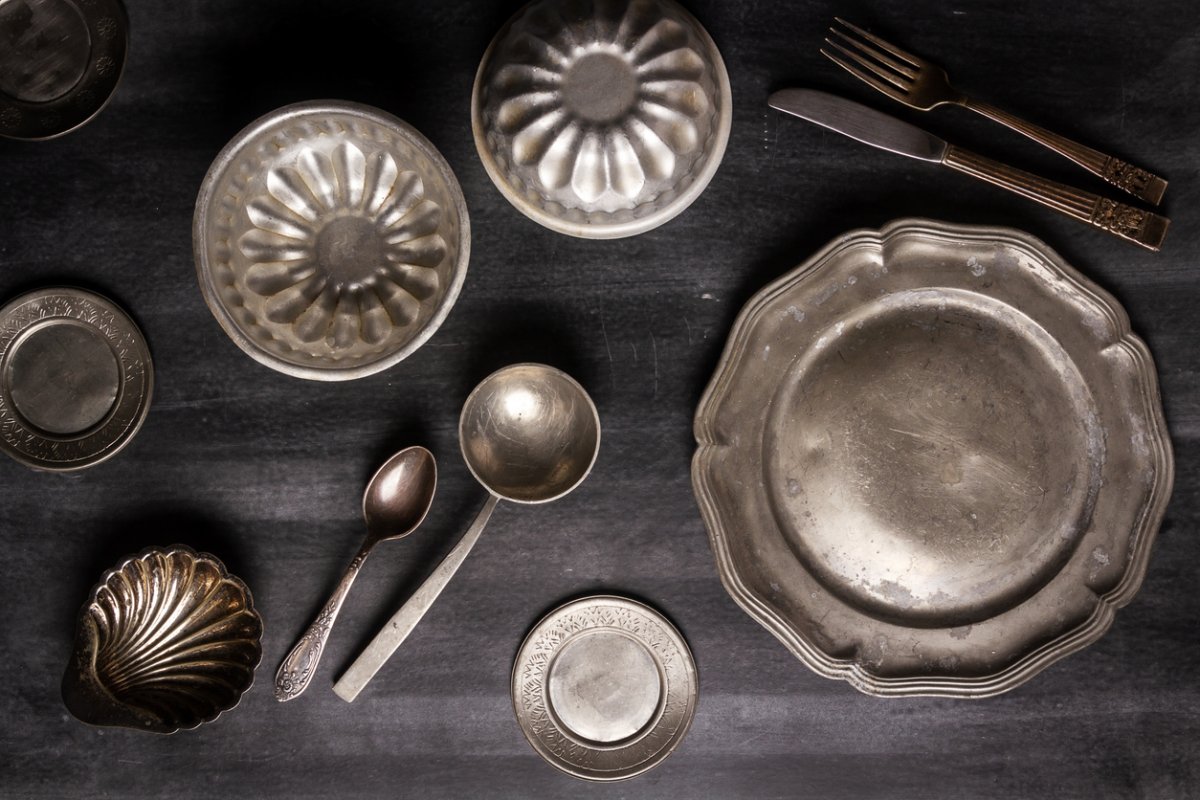We may earn revenue from the products available on this page and participate in affiliate programs. Learn More ›
Pewter is used in everything from jewelry to kitchen utensils to the classic tankard. This metal remains popular with artisans and craftspeople because its malleability makes it easy to work. Since it won’t rust like iron or tarnish like silver, pewter is an excellent low-maintenance alternative to iron or silver.
All that said, pewter still needs cleaning and polishing from time to time to maintain its luster and beauty. If you’ve never done it yourself and are looking for advice on how to clean pewter, you’re in the right place: This guide, including guidance from a pewter expert and a cleaning expert, will set you on the right path.
What is pewter?
Pewter is an alloy that consists of several other metals, typically tin, copper, and antimony. This combination makes it extremely malleable, which is why it can be shaped into a variety of items, including jewelry, figurines, and dinnerware. One of pewter’s most noteworthy characteristics is that it will never rust or tarnish. As it ages and is handled, however, it will develop a dark patina.
Is pewter toxic?
Whether pewter is toxic depends on how old an item is. Lead was removed from pewter’s composition in 1974; most modern pewter doesn’t contain lead and therefore doesn’t present a risk of toxicity. Older pewter pieces that contain trace amounts of lead will develop a grayish-black patina on their surfaces. While it’s safe to display pewter that contains lead, only lead-free pewter is safe to be worn as jewelry, or used when consuming food or drink.
How often should you clean pewter?
How often you should clean pewter depends on the object and function, says Fierman. “Dishware can and should be cleaned often with use, but if a display item, it can be dusted regularly and cleaned with soap and water a few times per year,” she says. The frequency depends on its environment and whether the finish is polished, satin, or oxidized, she explains.
Types of Pewter Finishes

You’ll find pewter in three types of finishes: satin, polished, and oxidized.
- Oxidized pewter is a charcoal gray color from its treatment with a darkening agent. Polishing it will remove this dark layer.
- Satin pewter has a soft matte finish. As with oxidized pewter, polishing satin pewter will remove its patina.
- Polished pewter (see photo above) has a high sheen that mimics the look of silver. This type of pewter needs to be polished periodically to maintain that sheen.
Tools & Materials
Bobvila.com may earn a commission from purchases made through these links.
Project Overview
Working Time: 2 hours
Total Time: 2.5 hours
Skill Level: Beginner
Estimated Cost: $15 to $30
Before You Begin
Before proceeding with cleaning, first determine if this is a job you should take on yourself. Antique pieces that are exceptionally dirty can be tricky to clean without causing damage. If you’re cleaning a pewter piece that is a valuable antique or family heirloom, leave it to the professionals.
How to Clean Pewter

We tapped two experts in cleaning pewter for guidance—Jonathan Gibson, the owner of Gibson Pewter, a family-owned New Hampshire-based business that has been making and restoring handcrafted pewter for more than 40 years; and Sabrina Fierman, president of New York’s Little Elves, a high-end New York City-based house-cleaning company.
Step 1: Fill a sink or bucket with hot water.
If you have one, use a bucket or bowl that’s large enough to allow you to submerge the entire piece under water. Gibson stresses that the water needs to be quite hot to break up any greasy or oily residue that has collected on the surface of the metal.
Step 2: Add a few drops of mild dishwashing soap.
This is typically all that’s needed to remove any dirt that’s collected on the surface of the pewter. “Leave the piece submerged for several minutes to loosen up the dirt,” Gibson says.
Step 3: Clean the pewter.
How you go about cleaning the pewter depends on whether you plan on retaining any patina that has formed on it or removing the patina to achieve a polished finish.
Gibson suggests using ultra-fine steel wool if you’re removing the patina from the pewter. “I take super-fine steel wool, submerge it in the hot water, and then I add my secret weapon, Dawn Ultra concentrated dish liquid, and just scour the piece,” he says. Make sure to scrub in the same direction as the grain of the metal, working around the piece in a circular fashion, and avoid any non-pewter parts that the steel wool can scratch, such as wooden handles or stainless steel parts of jewelry.
If you plan on preserving the patina on your pewter, Fierman advises using a sponge or non-abrasive cloth instead of steel wool to avoid removing the patina.
Step 4: Rinse well.
Dip the piece back into clear hot water to rinse off any soap.
Step 5: Dry the item completely.
Using a soft 100-percent cotton cloth that is lint-free, dry the item thoroughly to prep it for polishing.
How to Polish Pewter

Whereas cleaning will remove dirt, oils, or food particles stuck to a pewter piece, polish will remove oxidation, restoring the pewter’s luster.
Step 1: Determine what kind of finish the pewter has.
Knowing how to polish pewter starts with identifying which type of finish your pewter has. “The color, shine and texture of pewter will clue you into which it is,” Fierman says. “Polished pewter appears smooth and shiny, while satin pewter appears less shiny and less smooth with a grainier texture. Oxidized pewter is dark and old looking,” she says.
Remember, polishing pewter will remove any oxidation that creates a patina on the pewter’s surface. If you want to preserve a satin or oxidized finish, skip the polishing.
Gibson advises against keeping the patina if you truly want to preserve the piece, pointing out that any oxidation will slowly eat away at the metal. “You polish your silver, you polish your copper, you polish your brass, and you should polish your pewter,” he says. “That surface scale and oxidation will etch away at the metal unless it’s removed,” Gibson says.
Step 2: Choose your metal polish.
You have two options when it comes to polishing pewter. You can go with a store-bought metal cleaner or polish, or make your own using common household items.
- Store-bought metal polish. Gibson recommends using Mothers Mag and Aluminum Polish. For valuable pewter antiques, he says spring for the good stuff, which is Simichrome Polish. Fierman says that New York’s Little Elves’ go-to cleaners for pewter are Brasso, Goddard’s, and Hagerty’s. “Any metal cleaner that includes pewter as a safe material in the product label will be fine,” Fierman says.
- Homemade polish. If you prefer make your own pewter polish, Fierman suggests combining 1 cup of white vinegar with 1 1/2 cups of flour.
RELATED: How to Clean Metal the Right Way
Step 3: Apply polish with a cotton ball.
Use a cotton ball to apply the polish to the pewter. As when cleaning the item, rub the polish in the same direction as the metal grain. Gibson says any wispy lines created by the steel wool during cleaning will be filled in by the polish: “You should no longer see any evidence of the scouring,” she says.
Pro Tip: Gibson stresses using only 100-percent cotton materials when applying and removing polish, as synthetic materials like polyester can leave small scratches. His weapons of choice for polishing are a cotton ball for applying the polish, and a cotton diaper for buffing it.
Step 4: Remove residue from the pewter.
Wipe away the polish residue and buff the pewter using a 100-percent cotton cloth.
FAQs
Pewter is a metal alloy that’s made from a mix of between 85 and 99 percent tin with copper, antimony, and bismuth. Older pewter (pre-1974) can also include lead.
Avoid using baking soda to clean pewter. Baking soda is abrasive and can leave scratches on the surface of the metal.
Pewter will never form rust. Pewter will oxidize, which creates a dark layer over its surface.


